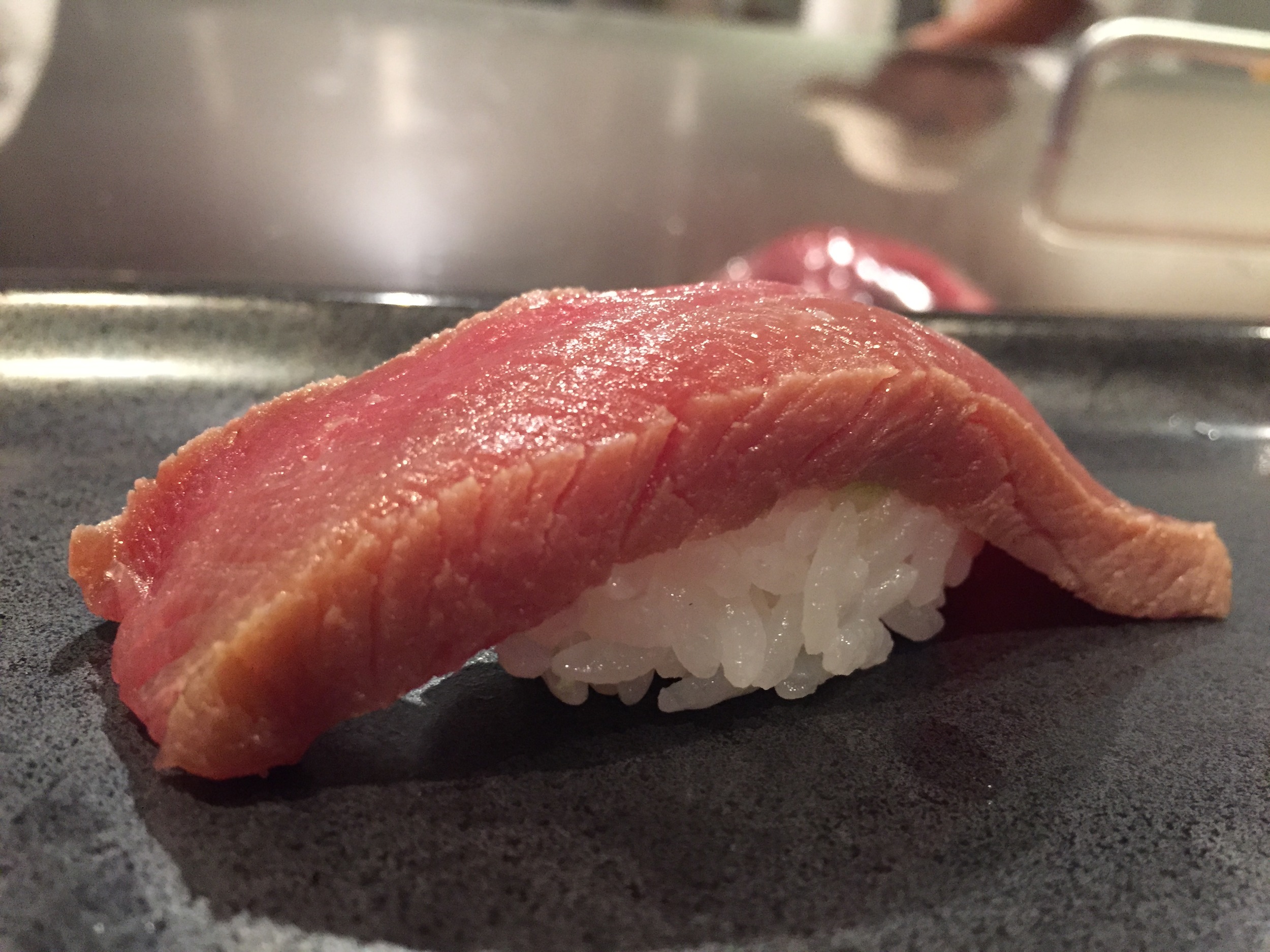- Cost: ~$150/person, before drinks, tax and tip
- Size: 16 seats at counter + dining room
- Style: few otsumami + sushi omakase
- Reserved: 2 weeks in advance
New York City is blessed with a number of what I would call "second-tier" sushiya that offer serious technique in a more casual setting, at a lower price point supported by "very good" but perhaps not "top" neta quality. As I have noted elsewhere, my personal enjoyment at a sushiya relies much more on the overall balance of flavors and chef technique rather than pure ingredient quality. This is also true in Japan - some of the highest-rated sushiya on tabelog (Sushi Nanba and Miyakozushi) are more casual spots that provide an excellent mix of variety and technique, but perhaps not the "best" neta quality. (Of course, we are mincing words a bit here, as a meal at the above sushiya is still in the hundreds of $USD, and there is really no fair comparison between many US and Japanese sushiya).
Ushiwakamaru certainly falls into this category. It is beloved by regulars as much for the accessible environment and its table service as it is for high-quality, serious sushi. Though the restaurant's most recent move from the West Village to Chelsea has resulted in a turn towards more modernist décor and a longer sushi counter, the overall experience is as consistent as ever.
A big part of the popularity of the shop is that its head chef, Hideo Kuribara, has a fairly traditionalist approach to omakase. On my most recent visit, tsumami included house-made konnyaku and shiokara (one of the chef's specialties). The kanpyo, a barometer of any serious shop, was also house-made.
The shari at Ushiwakamaru is typically of great consistency, with fairly large grain size, and also fairly dry (as I've mentioned before, this is one of my preferred styles for shari). It is slightly warm. From a consistency perspective, it performed better than a number of "higher-end" sushiya mentioned on this website.
The neta quality is not the absolute "top", and this was apparent from tasting items like the uni, certain hikarimono and the anago. But other items, such as a triple-layered nigiri of "gomo"-saba, or local hamaguri (a trend at NY sushiya these days) were truly excellent. The maguro, sourced from Canada (I am unsure if it was farmed), had a distinctive sweetness that is uncommon in Atlantic Bluefin. And the offering of several unusual cuts of maguro, such as hagashi (cut from between the back belly sinews) and sekami (from the "shoulder") made for excellent additions to the meal.
The one oddity in my most recent experience was that the chefs, including Hideo-san, all wore plastic gloves. It's unclear if this was due to the fact that the shop had newly reopened and was being extra cautious for any unannounced DOH-visits or for something else. It made for nigiri construction and balance that sometimes a little bit off. But this was really only a minor issue. Hopefully it is not a permanent fixture.
Ushiwakamaru is a spot with great sushi, great chefs, and a really fun environment (worth noting that most chefs are very happy for you to share a beer or sake with them). More importantly, the technique level is quite high and the sushi is fairly traditional in form and presentation. It certainly stands as a great spot for omakase in New York.
































